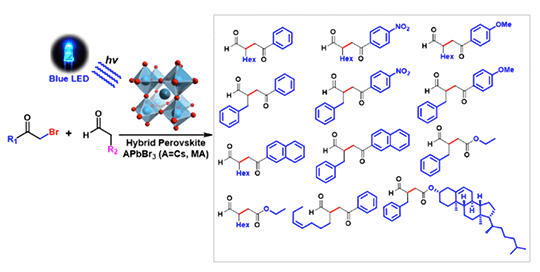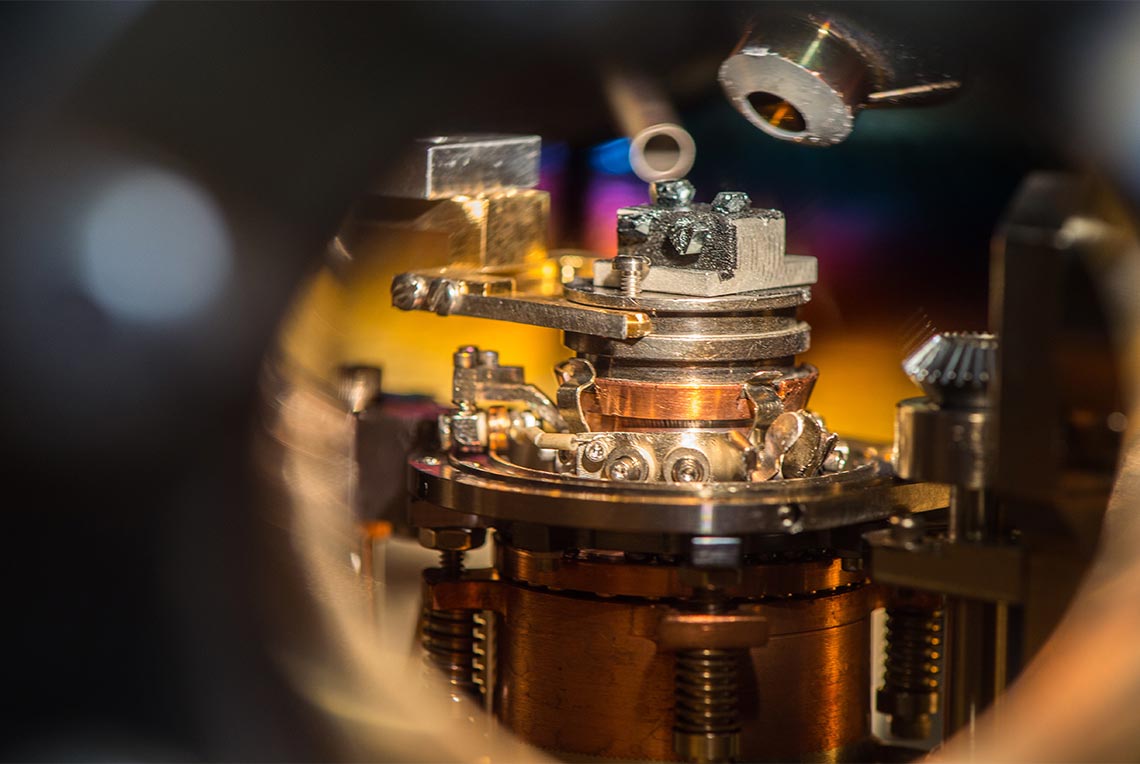Lead-Halide Perovskites for Photocatalytic C-C bond Formation
Jan. 2, 2019
The as-prepared perovskite nanocrystals are effective in photocatalysis with a turnover number (TON) of over 52,000 for a-alkylation, three orders of magnitude higher than precious Ir or Ru catalysts.
Scientific Achievement
Here we demonstrate that readily prepared suspensions of APbBr3 (A = Cs or methylammonium [MA]) type perovskite colloids (ca. 2-100 nm) can selectively photocatalyze carbon-carbon bond formation reactions, i.e., a-alkylations. We demonstrate α-alkylation of aldehydes with a TON of over 52,000 under visible light illumination.
Significance and Impact
Carbon-carbon (C-C) bond formation is one of the most fundamental transformations in organic synthesis. Nature is capable of storing solar energy in chemical bonds via photosynthesis. A fundamental aim is the development of new modes of small molecule activation via cheap, effective and easy-to-process catalytic systems. Hybrid organic/inorganic perovskites are revolutionizing photovoltaic research and are now impacting other research fields, here we explore their use in photocatalysis.
Research Details
- One pot synthesis is developed that can perform alkylation reactions under mild reaction conditions.
- The selectivity of the reaction was explored and under slight changes in reaction conditions, we can selectively produce3a, 4a,or 5a. See figures.
DOI: 10.1021/jacs.8b08720
Related People
Matthew Beard
National Renewable Energy Laboratory
Yong Yan
San Diego State University

The one-pot reaction demonstration of the photocatalytic properties of perovskite NCs.

Slight changes to the reaction conditions results in a broad scope of photocatalytic reductive dehalogenation, sp3-C couplings, and α-alkylation of aldehydes.









